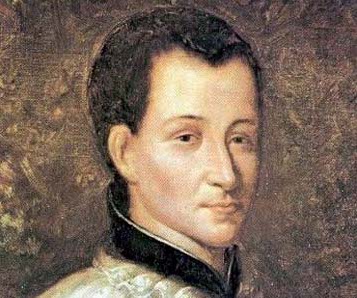St. Claude de La Colombiere was born in 1641 near the south of France. He was one of seven children, and three of his siblings entered religious life or the priesthood. Claude attended a Jesuit school as a child, and entered the order when he was 17.
As a recruit, he admitted that he had a “horrible aversion” to the rigorous training that the Jesuits required. But he persisted, and sharpened his focus and natural talents. Later, he took a private vow to follow the order’s rules as perfectly as possible.
Claude was ordained a priest in 1669, and became known for his gift of preaching. He taught college students and tutored the children of King Louis XIV’s minister of finance.
In 1674, Claude became the superior of a Jesuit house in Paray-le-Monial. During this time, he served as confessor to the convent of Visitationist nuns, and met a sister who would later be canonized as St. Margaret Mary Alacoque.
Sr. Margaret Mary claimed to have received private revelations from God, urging devotions to his heart as the symbol and seat of God’s love for mankind. When she told others in her convent, they dismissed her. Claude became her spiritual director, and learned a great deal about her revelations. He eventually concluded that Sr. Margaret Mary had in fact received these revelations from Jesus.
Through his writings and his testimony, Claude helped establish the Sacred Heart as a hallmark of Catholic devotion. The Sacred Heart also helped combat the heresy Jansenism, which believed God did not want some people to be saved.
In 1676, Claude was called to England, where he ministered as chaplain and preacher to Mary of Modena, the Duchess of York. Two years later, when false rumors spread about a Catholic plot against the English king, Claude was arrested and spent several weeks in a dungeon. Ultimately, 35 innocents were killed, including eight Jesuits.
Claude’s imprisonment wrecked his health, and he returned to Paray-le-Monial in 1681. At the age of 41, he died from internal bleeding on Feb. 15, the first Sunday of Lent that year. He was beatified in 1929, nine years after the canonization of St. Margaret Mary, and was canonized 63 years later.

